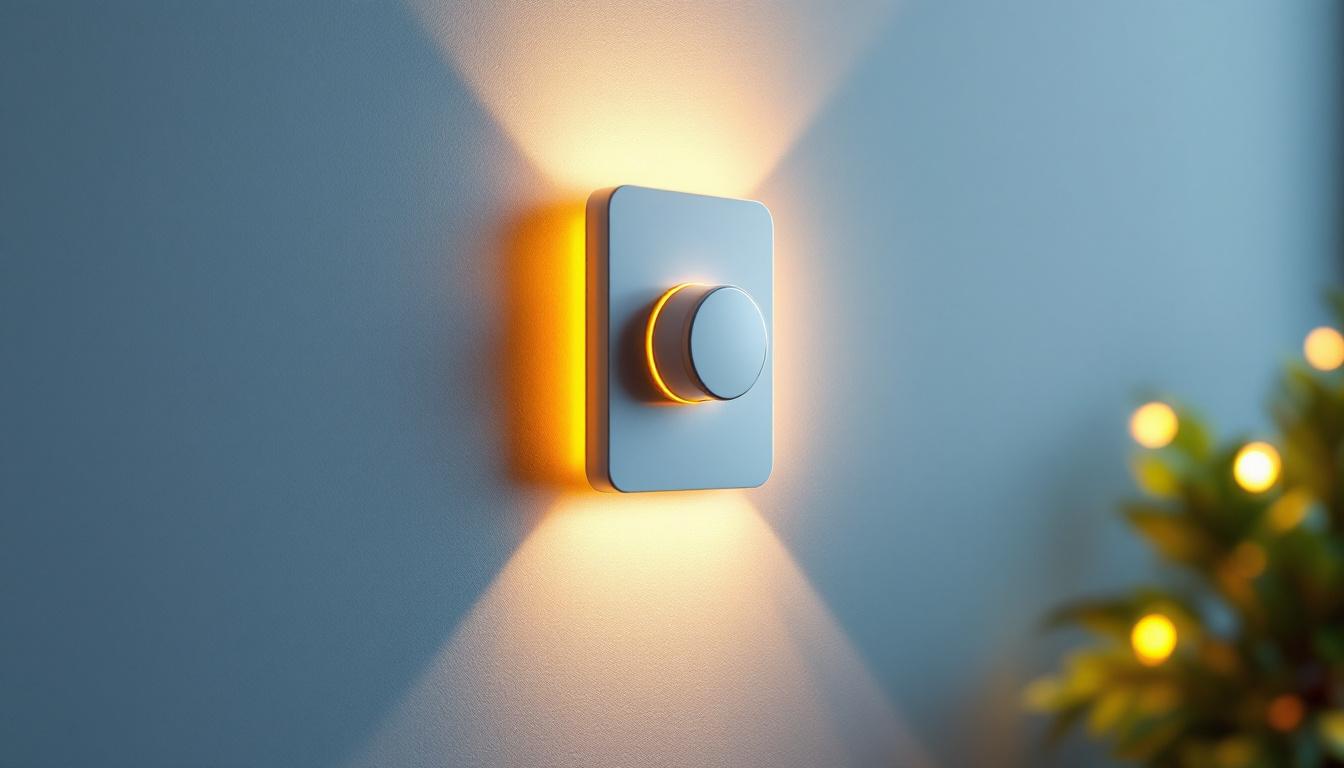
In the realm of modern lighting solutions, LED technology has emerged as a frontrunner due to its energy efficiency and longevity. However, to maximize the benefits of LED lighting, it is essential to integrate the right controls, particularly dimmer switches. This article delves into the intricacies of light dimmer switches for LEDs, focusing on how to optimize them for maximum efficiency in lighting applications. Lighting contractors will find valuable insights into selecting, installing, and utilizing dimmers effectively.
Before diving into the optimization techniques, it’s crucial to understand the compatibility of LED lights with dimmer switches. Not all dimmers are created equal, and using an incompatible dimmer can lead to performance issues.
LED-compatible dimmers come in various types, including trailing-edge, leading-edge, and smart dimmers. Trailing-edge dimmers are generally recommended for LED lights as they provide smoother dimming capabilities and reduce flickering. Leading-edge dimmers, often used with incandescent bulbs, may not perform well with LEDs, causing issues such as buzzing or flickering.
Smart dimmers offer additional features, such as remote control and integration with home automation systems. These can enhance user experience and provide energy savings, making them an attractive option for modern lighting installations. Many smart dimmers also allow for customizable lighting scenes and schedules, enabling users to create the perfect ambiance for any occasion. With the rise of smart home technology, these dimmers can be controlled via smartphone apps or voice commands, making them not only convenient but also a stylish addition to any home.
When selecting a dimmer switch, it is essential to consider the specifications of the LED fixtures being used. Factors such as wattage, voltage, and load type play a significant role in ensuring compatibility. For instance, a dimmer rated for a specific wattage should match or exceed the total wattage of the connected LED lights to function correctly.
Moreover, it is advisable to check the manufacturer’s recommendations for both the LED fixtures and the dimmer switches. This ensures that the products are designed to work together, minimizing the risk of performance issues. Additionally, understanding the electrical characteristics of your home’s wiring can also be beneficial. For example, older homes may have different wiring standards that could affect how dimmers operate with modern LED technology. Ensuring that your electrical system is up to date can prevent potential complications and enhance the overall performance of your lighting setup.
Proper installation of dimmer switches is critical to achieving optimal performance and efficiency. Lighting contractors should adhere to best practices to ensure a seamless integration of dimmers into lighting systems.
When installing a dimmer switch, it is vital to follow the manufacturer’s wiring instructions carefully. Incorrect wiring can lead to malfunctioning lights or even electrical hazards. Ensure that all connections are secure and that the dimmer is rated for the circuit’s voltage and amperage.
Additionally, consider the layout of the lighting system. Grouping lights on a single dimmer can simplify control and enhance efficiency, but it’s essential to stay within the dimmer’s load capacity. If necessary, use multiple dimmers to manage larger installations effectively. Furthermore, it’s advisable to use high-quality wiring and connectors to minimize resistance and heat buildup, which can compromise the dimmer’s performance over time. Using stranded wire instead of solid wire can also provide better flexibility and reduce the risk of breakage during installation.
Once the dimmer switch is installed, testing is a crucial step. Gradually adjust the dimmer to check for smooth transitions in brightness. Look for any flickering or buzzing, which may indicate compatibility issues or the need for adjustments.
Calibration may also be necessary for smart dimmers, as these devices often require configuration to optimize performance. Follow the manufacturer’s guidelines to ensure that the dimmer operates effectively with the connected LED fixtures. Additionally, consider the ambient conditions of the installation area; factors such as temperature and humidity can affect the performance of dimmers. For example, if the dimmer is installed in a particularly warm environment, it may be beneficial to choose a model with better heat dissipation features to prevent overheating and prolong its lifespan.
One of the primary reasons for integrating dimmer switches into LED lighting systems is the potential for energy savings. By understanding how to maximize energy efficiency, lighting contractors can provide added value to their clients.
Encouraging clients to utilize the full range of dimming features can lead to significant energy savings. For instance, reducing the brightness of lights during daylight hours or when the space is unoccupied can lower energy consumption. Educating clients on the benefits of dimming can enhance their overall satisfaction with the lighting system.
Moreover, consider implementing occupancy sensors in conjunction with dimmers. These sensors can automatically adjust lighting levels based on room occupancy, ensuring that lights are only on when needed. This combination can lead to substantial energy savings and improved efficiency. Furthermore, integrating smart home technology can elevate this system to a new level, allowing clients to control their lighting remotely via smartphone apps or voice commands, enhancing convenience while promoting energy conservation.
The choice of LED fixtures also plays a critical role in energy efficiency. Selecting high-quality, energy-efficient LED bulbs that are specifically designed for dimming can enhance performance. Look for products with the ENERGY STAR label, as these meet strict efficiency guidelines and are likely to perform well with dimmers.
Additionally, consider the color temperature of the LEDs. Warmer color temperatures can create a more inviting atmosphere, while cooler temperatures may be suitable for task-oriented spaces. Providing clients with options can help them make informed decisions that align with their energy efficiency goals. Beyond aesthetics, the placement of fixtures can also impact energy use; strategically positioning lights to minimize shadows and maximize illumination can reduce the need for additional lighting, further enhancing energy savings. Encouraging clients to think about their specific lighting needs and how they use their spaces can lead to more tailored and effective lighting solutions.
Even with careful selection and installation, issues can arise when using dimmer switches with LED lights. Understanding these common problems and their solutions can help lighting contractors troubleshoot effectively.
Flickering and buzzing are two of the most common issues encountered when using dimmers with LEDs. Flickering can occur due to incompatible dimmer switches, insufficient load on the dimmer, or poor-quality LED bulbs. To resolve flickering, ensure that the dimmer is compatible with the specific LED fixtures and that the total load meets the dimmer’s requirements.
Buzzing, on the other hand, is often caused by the dimmer’s technology. Switching to a trailing-edge dimmer or a higher-quality product may help alleviate this issue. Additionally, ensuring that all connections are secure can minimize electrical noise.
Some LED fixtures may have a limited dimming range, which can be disappointing for clients expecting full control over brightness levels. This limitation can stem from the design of the LED itself or the dimmer switch. When selecting products, it is essential to choose LEDs that offer a wide dimming range and are explicitly labeled as dimmable.
If clients experience limited dimming, consider recommending alternative LED fixtures or dimmer switches that provide better performance. Testing different combinations can help identify the optimal solution for each installation.
The landscape of LED dimming technology is continually evolving, offering exciting possibilities for lighting contractors and their clients. Staying informed about emerging trends can provide a competitive edge in the industry.
Smart lighting systems are gaining popularity, allowing users to control their lighting through mobile apps or voice commands. These systems often include advanced dimming features, enabling users to customize their lighting experience effortlessly. Integration with smart home ecosystems can enhance convenience and energy efficiency, making them an attractive option for modern installations.
As smart technology continues to advance, lighting contractors should consider incorporating these solutions into their offerings. Familiarizing themselves with various smart dimmers and their compatibility with different LED fixtures can help contractors provide tailored solutions for their clients.
Energy management systems are becoming increasingly sophisticated, allowing for real-time monitoring and control of energy consumption. These systems can integrate with dimmers to optimize lighting levels based on occupancy, time of day, and other factors. By leveraging data analytics, contractors can help clients make informed decisions about their lighting usage, leading to further energy savings.
As clients become more conscious of their energy consumption, offering solutions that incorporate energy management systems can position contractors as forward-thinking professionals in the lighting industry.
Incorporating light dimmer switches into LED lighting systems is essential for maximizing efficiency and enhancing user experience. By understanding compatibility, adhering to installation best practices, and addressing common issues, lighting contractors can optimize their projects for success. Furthermore, staying informed about emerging trends in LED dimming technology will ensure that contractors remain competitive in a rapidly evolving market.
Ultimately, the goal is to provide clients with efficient, effective, and customizable lighting solutions that meet their needs while promoting energy savings. By following the insights outlined in this article, lighting contractors can elevate their expertise and deliver exceptional results in their lighting projects.
Ready to take your LED lighting projects to the next level? LumenWholesale is here to support you with high-quality, specification-grade lighting products at unbeatable wholesale prices. Say goodbye to local distributor markups and hello to a vast selection of reliable, high-performance lighting essentials that meet the highest industry standards. With free shipping on bulk orders, you can stock up on everything you need for efficient, effective lighting solutions. Discover the best value in wholesale lighting and make LumenWholesale your go-to for superior products that blend quality, affordability, and convenience seamlessly.

Discover the essential facts about pot lights LED that every lighting contractor should know.

Discover how LED light rolls are revolutionizing the lighting industry for contractors.

Discover how waterproof electrical connectors are revolutionizing the lighting industry, offering enhanced durability and safety for contractors.

Discover the latest innovations in motion sensing porch lights that are transforming outdoor lighting solutions.